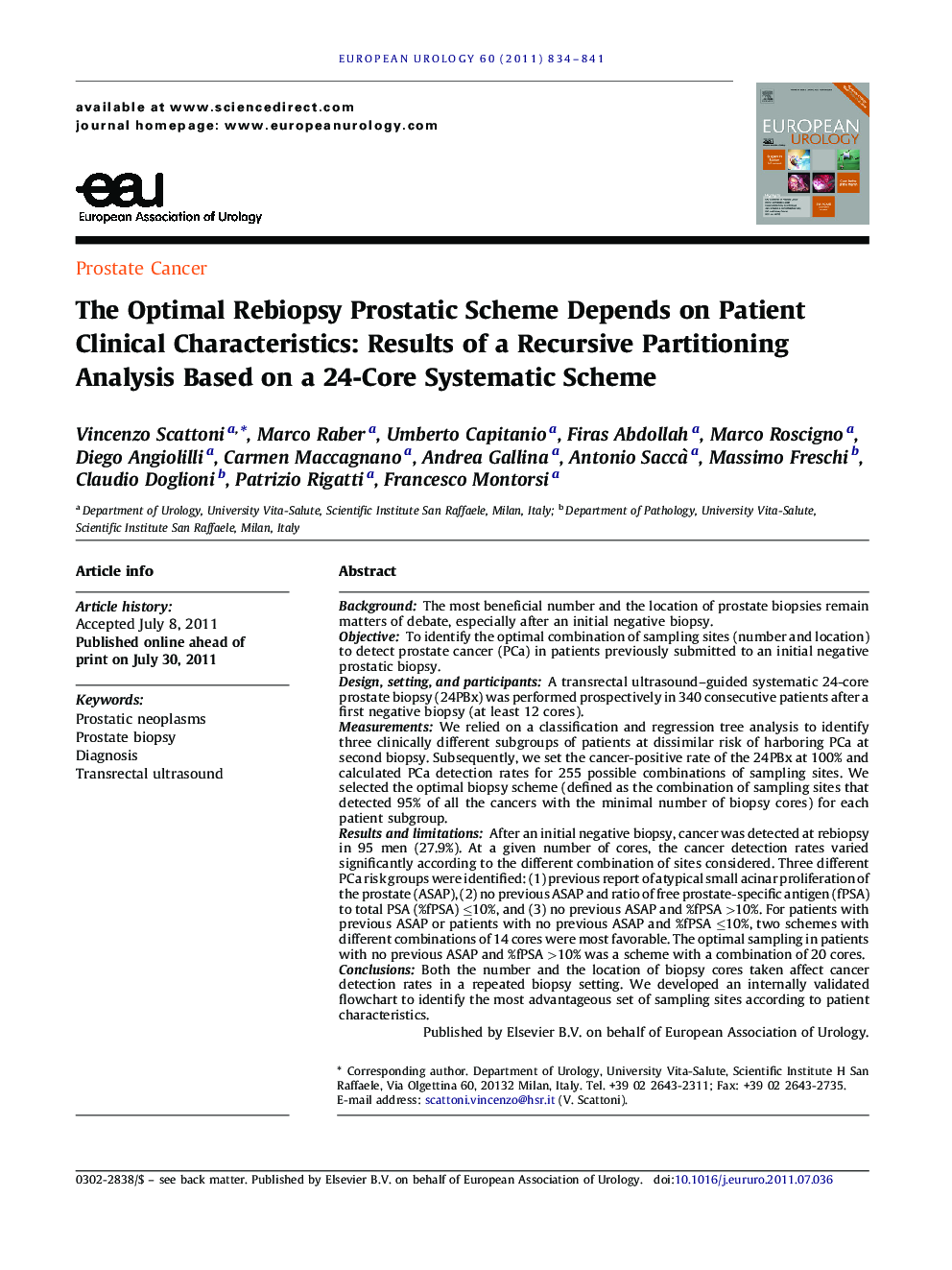| کد مقاله | کد نشریه | سال انتشار | مقاله انگلیسی | نسخه تمام متن |
|---|---|---|---|---|
| 3924276 | 1253098 | 2011 | 8 صفحه PDF | دانلود رایگان |

BackgroundThe most beneficial number and the location of prostate biopsies remain matters of debate, especially after an initial negative biopsy.ObjectiveTo identify the optimal combination of sampling sites (number and location) to detect prostate cancer (PCa) in patients previously submitted to an initial negative prostatic biopsy.Design, setting, and participantsA transrectal ultrasound–guided systematic 24-core prostate biopsy (24PBx) was performed prospectively in 340 consecutive patients after a first negative biopsy (at least 12 cores).MeasurementsWe relied on a classification and regression tree analysis to identify three clinically different subgroups of patients at dissimilar risk of harboring PCa at second biopsy. Subsequently, we set the cancer-positive rate of the 24PBx at 100% and calculated PCa detection rates for 255 possible combinations of sampling sites. We selected the optimal biopsy scheme (defined as the combination of sampling sites that detected 95% of all the cancers with the minimal number of biopsy cores) for each patient subgroup.Results and limitationsAfter an initial negative biopsy, cancer was detected at rebiopsy in 95 men (27.9%). At a given number of cores, the cancer detection rates varied significantly according to the different combination of sites considered. Three different PCa risk groups were identified: (1) previous report of atypical small acinar proliferation of the prostate (ASAP), (2) no previous ASAP and ratio of free prostate-specific antigen (fPSA) to total PSA (%fPSA) ≤10%, and (3) no previous ASAP and %fPSA >10%. For patients with previous ASAP or patients with no previous ASAP and %fPSA ≤10%, two schemes with different combinations of 14 cores were most favorable. The optimal sampling in patients with no previous ASAP and %fPSA >10% was a scheme with a combination of 20 cores.ConclusionsBoth the number and the location of biopsy cores taken affect cancer detection rates in a repeated biopsy setting. We developed an internally validated flowchart to identify the most advantageous set of sampling sites according to patient characteristics.
Journal: European Urology - Volume 60, Issue 4, October 2011, Pages 834–841